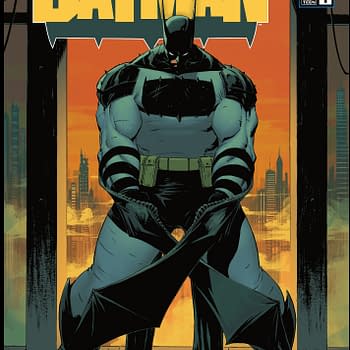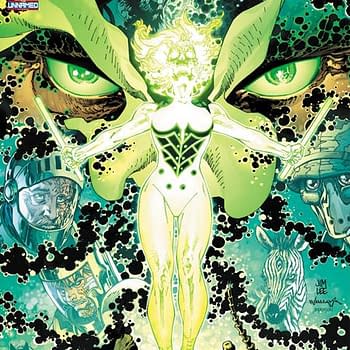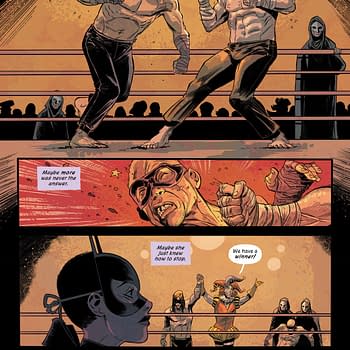Posted in: Comics, Recent Updates | Tagged: Ariel Williams, comic art, Comics, depthRADIUS, deviantART, entertainment, superman
The Mysteries Of Superman's Underpants Revealed
DeviantArt's journal depthRADIUS has recently published a short visual essay entitled "Secrets of Superman's Underwear", and it's actually quite a detailed analysis and argument that the necessities of comic book art publishing lay behind the choice for Superman to be depicted with his underwear on the outside.
I've previously heard many debates about this (because I move in classy circles) and the prevailing theory has been that it was influenced by wrestling costumes of the period as well as a general trend not to show too much bare skin, but I have to say that author of the piece Ariel Williams makes a good case.
[Ariel Williams uses this image by Joe Shuster to illustrate, from left to right the original image, "no undies", and "groin accent"]
She says:
The reason for the unusual superhero undies is a strange mixture of economics, printing technology and artistic talents trying to find a middle ground between the two.
And after discussing printing methods proposes:
We often see color changes or divisions at the head, chest, waist, hands groin and feet. This allows the characters to have certain "attributes" stand out.
She posits that our greater ability to segment superhero bodies through linework these days has led to the "no undies" effect, which impacts even our current Superman comics, and artists have more of a choice in whether to go with classic design or not. Check out her essay and see if you agree, here.

To give you a little more information on the online journal depthRADIUS, they describe themselves as:
…named after the deviantART community that it reflects and represents. This on-line journal explores the depths of the arts world from fine art to the most eminently accessible community arts projects. depthRADIUS endeavors to connect artists and art enthusiasts with other artists and arts-related individuals from all levels of the arts community, from its most successful stars and innovators to beginners just learning their crafts. The "radius" of this journalistic conversation will extend in its boundaries into arts advocacy, education and appreciation.
















